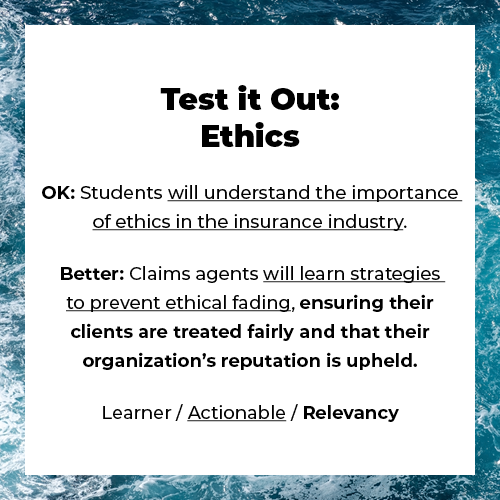
Building Learning Objectives
Learning objectives are critical to effective instruction.
They help guide instructors in developing instructional content and learning activities and learners to more meaningful learning outcomes.
From traditional classrooms to webinars to self-paced courses, most instructional content includes three to four learning outcomes, introduced at the beginning of a learning session, and are typically scaffolded, building upon the previous learning objective and establishing a foundation for the next.
A strong learning objective for adult learners (a) puts the learner first, (b) identifies a specific actionable, and (c) frames the actionable as relevent to the learner and the responsibilities associated with their profession.
Parts
Putting the Learner First
Learning objectives must identify the audience for the instruction (e.g., webinar attendees, course participants). The more specific a learning objective can be in identifying its learners (e.g., underwriters attending the webinar > attendees), the better.
Identifying an Actionable
Learning objectives need to confirm what the adult learner will be able to do, either at the end of the instruction, or as is common with longer educational programming, at specific points throughout the instruction.
Framing the Actionable With Relevancy
Learning objectives should explicitly state the purpose of the instruction. The adult learner should not only know what they’re going to learn, but why they need to understand it (i.e., context) and for what reason (i.e., relevancy; e.g., to better serve clients, reduce litigation).






